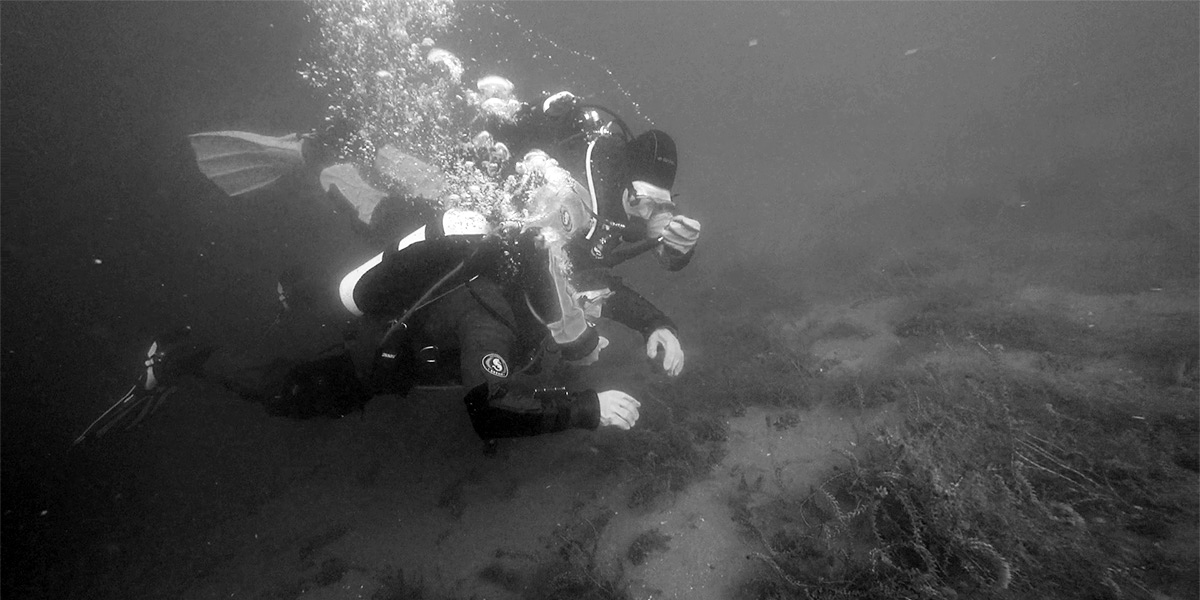EFFECTIVE RESCUE
Rescue skills are the basis of a diver’s complete education. Definitely, we wish everyone beautiful and easy dives, but is it enough to protect against problems underwater?
Wishes will not make up for the reality which can be surprisingly unenjoyable. One thing is certain, any reasonable person would like to have a well-trained buddy in an emergency situation. A man who is able to react quickly and appropriately. The rescue response time plays a key role in this situation, but it must be combined with the appropriate skills.
We are not able to describe all possible problems underwater, so we will deal with some of the worst … Loss of consciousness, respiratory arrest and a regulator mouthpiece loss. Suppose, your partner for the unknown reasons stops breathing and plunges to the bottom, with the regulator out of his mouth. It is you who is able to help him and who should do his/her best .
Many rescue trainings in this situation consider the upper air ways clearing and making for the surface with the help of available buoyancy devices, the choice of which depends on the situation and capabilities.
In the majority of observed simulated rescue operations, the steps to get the diver to the surface seem similar. During ascent, the diver together with the rescuer take the upright position. What is more, the rescued person firmly holds his/her head back, facing the surface. This is a serious mistake! Water floods the airways of the rescued person and he/she drowns during the rescue operation !
Is it possible to avoid this or definitely minimize ?
Of course!
The ISSF divers training teaches to swim with the casualty in a horizontal position. Such a body position minimizes the risk of water entering the airways. Imagine a bottle filled with air and turned upside down underwater… the water cannot enter it. If you turn it upwards, the gas will escape and the bottle fills with water. You can also test it on yourself, just remove the regulator from the mouth while in a horizontal position (face down to the bottom). Water will not enter your mouth unless you try to take a breath. The situation changes, if you remove the regulator from your mouth and you turn your face up to the surface. Your airways start to fill with water.
So, why trainings are conducted in a wrong way so often? This comes from several reasons. When learning the basics of diving there is too little emphasis put on the proper trim. Getting students properly trimmed is impeded by outdated diving gear and weight belts applied as the main ballast, to a large extent. This is extremely difficult or virtually impossible to get a person with an unbalanced weights distribution to the surface. In such a situation, the rescuer needs to make a very big effort when trying to keep the casualty in horizontal position. It is because he/she is forced to swim fast diagonally to the surface. Just the swimming pace may, to a certain extent, prevent the legs from sinking and dragging. The deeper you start the rescue ascent , the smaller the chance of maintaining the proper trim. A well distributed weight system makes the rescue operations much easier. Often a rescuer is only obliged to sustain clear upper airways, buoyancy control and uninhibited swimming.
We recommend to apply the horizontal position technique to any situation when the rescued person is unconscious and can be turned the face towards the bottom. No matter, whether or not he or she has the regulator in the mouth.
I encourage you to develop your own explorations and reflections in regards to learning rescue techniques …
